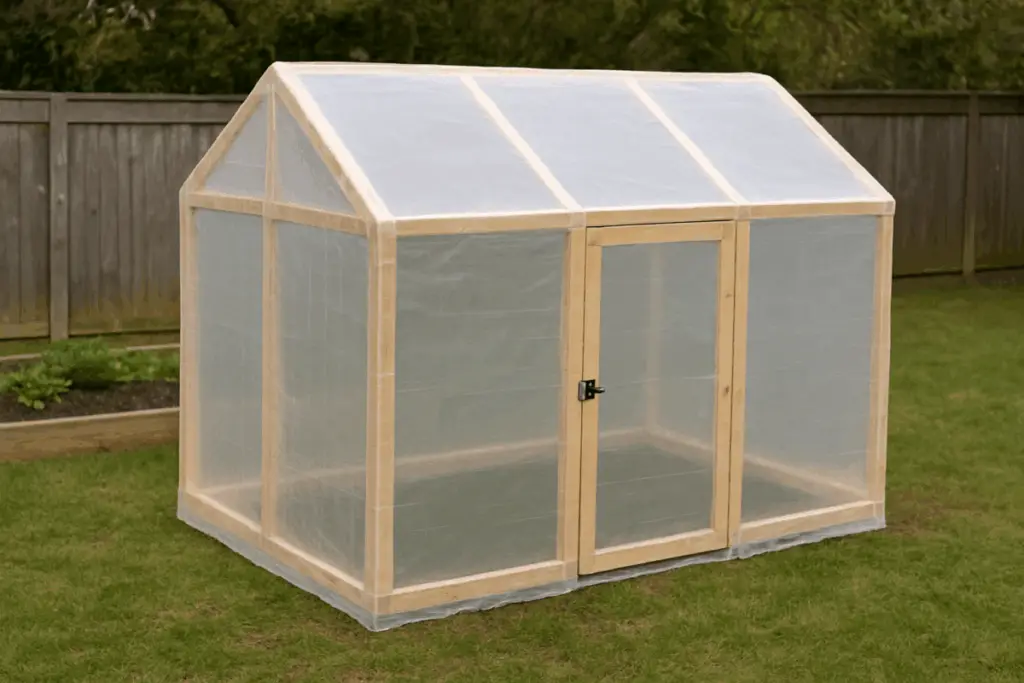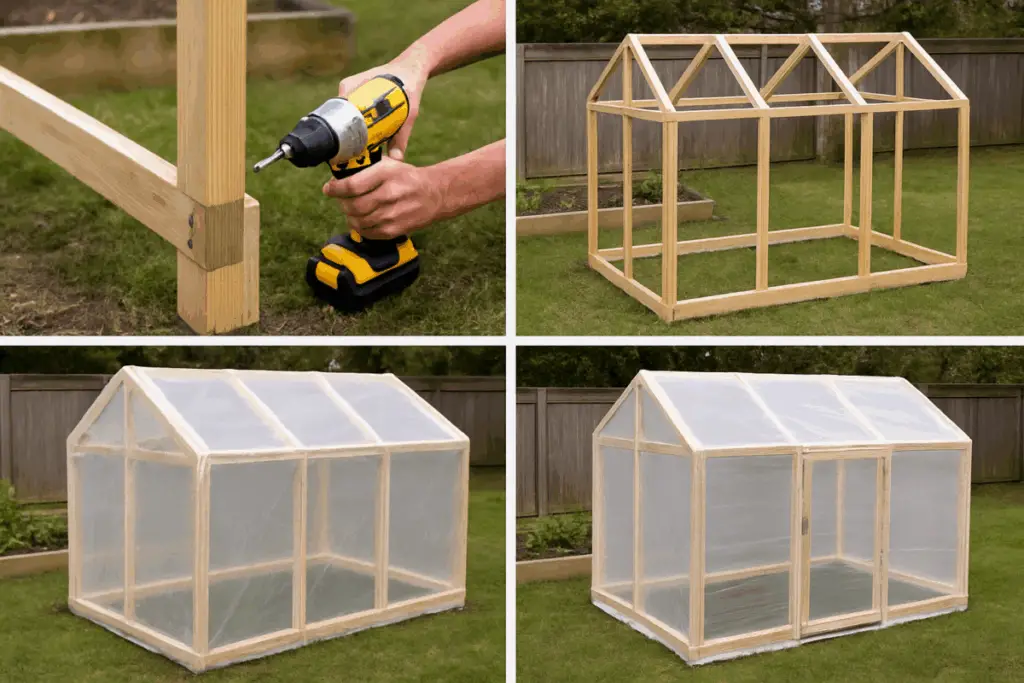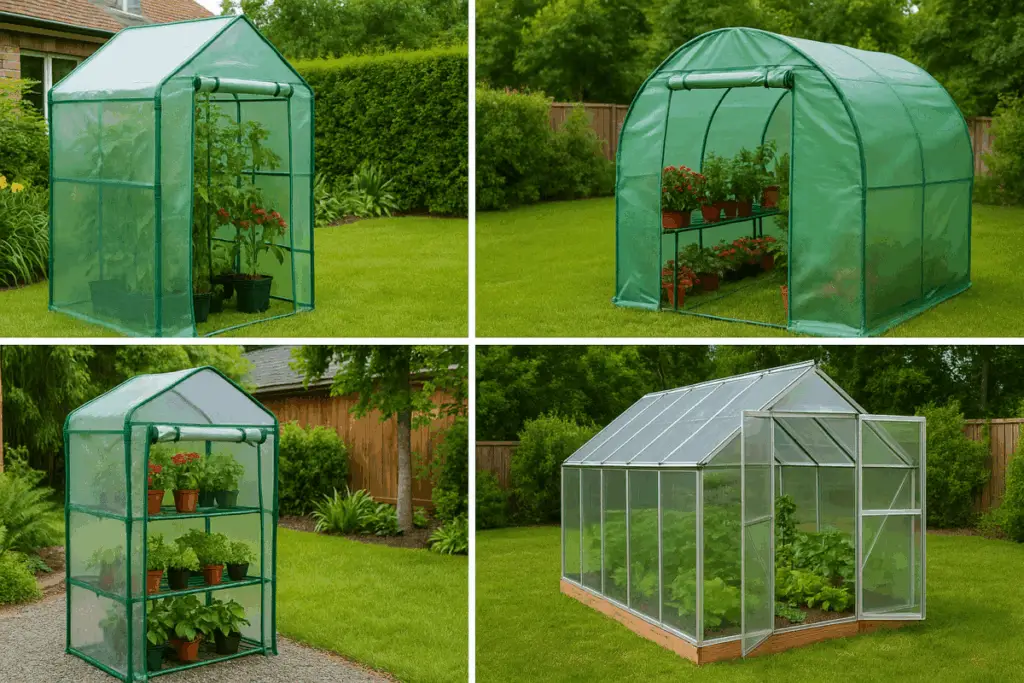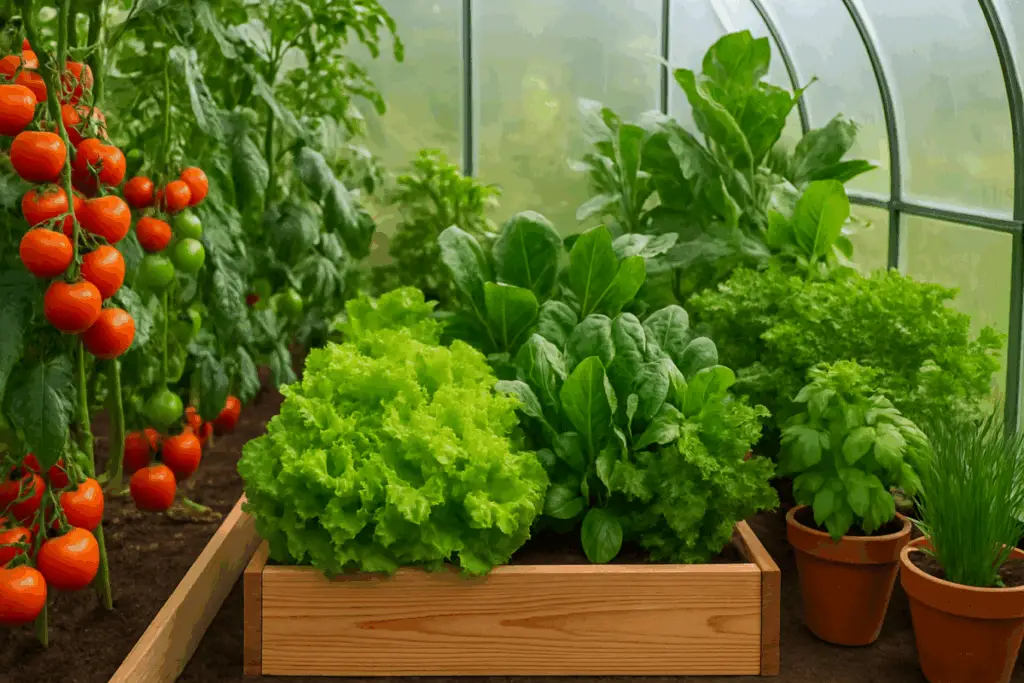
Grow More, Spend Less
If you’ve ever thought about stretching your growing season—or protecting those tender tomatoes from a surprise frost—you’re going to love how simple (and affordable) it can be. Building a backyard greenhouse doesn’t have to cost a fortune. In fact, with a little planning, you can set up a sturdy, productive greenhouse for under $100.
We’re not talking about some fancy, high-tech operation either. This is the kind of DIY greenhouse that fits into almost any backyard, looks good, and pays for itself after just one season of growing your own veggies, herbs, or seedlings.
Here’s what you’ll find in this guide:
- Simple materials you can grab locally or order online
- Step-by-step building tips (even if you’re not super handy)
- Affordable greenhouse kits that get the job done if DIY isn’t your thing
- Easy ways to boost your harvest and really make your $100 stretch
The best part? You don’t need acres of land—or a fancy setup—to start growing more food, saving more money, and feeling just a little bit more self-reliant.
Let’s jump in and build your budget-friendly backyard greenhouse!
Why a Greenhouse is a Game-Changer for Home Gardeners
A backyard greenhouse isn’t just a luxury—it’s a transformative tool for any gardener. Whether you’re aiming to extend your growing season, protect delicate plants, or boost your harvest, a greenhouse offers numerous benefits.
Extend Your Growing Season
One of the primary advantages of greenhouse gardening is the ability to start planting earlier in the spring and continue later into the fall. By creating a controlled environment, you can shield your plants from unpredictable weather, allowing for a more consistent and prolonged harvest.
Protect Plants from Pests and Harsh Weather
Greenhouses act as a barrier against common garden pests and harsh environmental conditions. This protection ensures that your plants remain healthy and reduces the need for chemical pesticides.
Increase Plant Variety and Yield
With a greenhouse, you’re not limited by your local climate. You can experiment with a wider variety of plants, including those that might not typically thrive in your region. This diversity can lead to a more bountiful and varied harvest.
Create a Sustainable Gardening Practice
Greenhouses support sustainable gardening by allowing for water conservation and reducing the need for external resources. By collecting rainwater and maintaining soil health within the greenhouse, you can create an eco-friendly gardening system.
By understanding the multifaceted benefits of greenhouse gardening, you’re better equipped to make informed decisions that align with your gardening goals and budget.
Option 1: Build Your Own Greenhouse Under $100
Why Go DIY?
Building your own greenhouse can be a rewarding project that saves money and allows customization to fit your specific gardening needs. With some basic materials and a bit of elbow grease, you can create a functional and efficient greenhouse without breaking the bank.
Materials and Estimated Costs
Here’s a breakdown of materials commonly used in budget-friendly DIY greenhouses:
| Material | Estimated Cost | Notes |
|---|---|---|
| 2×4 Lumber (for framing) | $20 | Use reclaimed wood to save more |
| Screws and Nails | $20 | Essential for assembly |
| Greenhouse Plastic Sheeting | $7.50 | 6 mil thickness recommended for durability |
| Hinges and Latches | $5 | For doors and ventilation windows |
| Thermometer | $3 | To monitor internal temperature |
| Miscellaneous Hardware | $5 | Includes brackets, handles, etc. |
| Total | ~$60.50 | Prices may vary based on location and sourcing |
Step-by-Step Construction Guide
- Design Your Greenhouse: Decide on the size and shape that fits your space. Lean-to designs are space-efficient and cost-effective.
- Prepare the Frame: Cut and assemble the 2×4 lumber to create the base and vertical supports. Ensure the structure is square and level.
- Install the Covering: Attach the greenhouse plastic sheeting securely to the frame, ensuring there are no gaps for heat to escape.
- Add Doors and Ventilation: Use hinges to install a door for access. Incorporate windows or vents to allow for airflow and temperature control.
- Monitor Conditions: Place a thermometer inside to keep track of temperature and make adjustments as needed.Instructables

Tips for Success
- Location Matters: Place your greenhouse in a spot that receives ample sunlight throughout the day.
- Secure the Structure: Ensure the greenhouse is anchored properly to withstand wind and weather conditions.
- Regular Maintenance: Check for any wear and tear, especially after storms, and make necessary repairs promptly.
By building your own greenhouse, you not only save money but also gain the satisfaction of creating a space tailored to your gardening aspirations.
Option 2: Affordable Greenhouse Kits Under $100
For those who prefer a ready-made solution, several greenhouse kits are available that are both affordable and efficient. These kits are ideal for gardeners seeking convenience without compromising on quality.
Top Picks for Budget-Friendly Greenhouse Kits
Here’s a curated list of greenhouse kits under $100, each offering unique features to suit various gardening needs:
| Product | Dimensions | Features | Ideal For | Amazon Link |
|---|---|---|---|---|
| Home-Complete 4-Tier Mini Greenhouse | 27″ x 19″ x 63″ | Four shelves, PVC cover, portable with wheels | Seedlings, small plants, indoor/outdoor use | View on Amazon |
| Ohuhu Walk-In Plant Greenhouse | 56″ x 56″ x 76″ | Spacious interior, durable PE cover, easy assembly | Medium-sized gardens, taller plants | View on Amazon |
| Miracle-Gro All-Season Greenhouse | 56″ x 56″ x 77″ | Eight shelves, steel frame, PVC cover | Year-round gardening, diverse plant types | View on Amazon |
| Quictent Portable Mini Cloche Greenhouse | 71″ x 36″ x 36″ | Tunnel design, roll-up zipper door, UV-resistant cover | Raised beds, small vegetable gardens | View on Amazon |
| ALDI Pop-Up Greenhouse | Varies | Compact, easy to set up, ideal for small spaces | Balconies, patios, limited outdoor areas | Find a store |
Note: Prices are approximate and may vary based on location and availability.
Features to Consider When Choosing a Greenhouse Kit
When selecting a greenhouse kit, consider the following factors to ensure it meets your gardening requirements:
- Size and Space: Assess the available space in your garden or patio to choose a greenhouse that fits comfortably.
- Material Quality: Look for durable materials like steel frames and UV-resistant covers to withstand various weather conditions.
- Ease of Assembly: Opt for kits that are easy to assemble, especially if you’re new to greenhouse gardening.
- Ventilation: Ensure the greenhouse has adequate ventilation options to regulate temperature and humidity.
- Portability: If you plan to move the greenhouse, consider lightweight options with wheels or easy disassembly features.

By choosing the right greenhouse kit, you can create an optimal environment for your plants, leading to healthier growth and extended harvesting periods.
Maximizing Your Greenhouse Investment
Once your budget-friendly greenhouse is up and running, it’s time to make the most of it. By selecting the right crops, optimizing your planting schedule, and implementing effective gardening techniques, you can ensure your greenhouse pays for itself—and then some.
Top Crops for High Yield and Profitability
Choosing the right crops is crucial for maximizing both yield and profitability. Here are some top performers that thrive in greenhouse conditions:
- Tomatoes: A greenhouse favorite, tomatoes can produce abundant harvests. Staking and pruning are essential for maximizing yield.
- Lettuce and Spinach: Fast-growing and in high demand, these leafy greens can be harvested multiple times.
- Peppers: Both sweet and hot varieties flourish in greenhouse environments, offering high market value.
- Cucumbers: With proper trellising, cucumbers can yield prolifically in a controlled setting.
- Herbs (Basil, Mint, Cilantro): High-value and quick to grow, herbs are perfect for continuous harvesting.

Seasonal Planting Calendar
Timing your plantings can significantly impact your greenhouse’s productivity. Here’s a simplified seasonal guide:
| Season | Recommended Crops |
|---|---|
| Spring | Lettuce, Spinach, Radishes |
| Summer | Tomatoes, Peppers, Cucumbers |
| Fall | Kale, Swiss Chard, Broccoli |
| Winter | Arugula, Mâche, Mustard Greens |
Note: Adjust planting times based on your local climate and greenhouse conditions.
Implementing Efficient Gardening Techniques
To further enhance your greenhouse’s productivity:
- Vertical Gardening: Utilize vertical space with shelves or trellises to grow more in less area.
- Integrated Pest Management (IPM): Monitor and manage pests using environmentally friendly methods to maintain plant health.
- Regular Maintenance: Keep your greenhouse clean and well-ventilated to prevent disease and promote vigorous growth.
By carefully selecting crops, adhering to a strategic planting schedule, and employing effective gardening practices, your $100 greenhouse can become a powerhouse of productivity and profitability.
Conclusion: Start Growing Smarter Today
Creating a productive backyard greenhouse for under $100 is not only achievable but also a smart investment in your gardening journey. Whether you choose to build your own or opt for an affordable kit, the benefits are substantial:
- Extended Growing Seasons: Protect your plants from unpredictable weather and start your gardening season earlier.
- Increased Yields: Grow a variety of crops more efficiently, leading to bountiful harvests.
- Cost Savings: Reduce grocery bills by cultivating your own fresh produce.
- Sustainable Living: Take a step towards self-sufficiency and eco-friendly practices.
By taking the initiative to build or purchase an affordable greenhouse, you’re investing in a healthier lifestyle and a more sustainable future. Happy gardening!
Frequently Asked Questions
1. Can I really build a functional greenhouse for under $100?
Yes, it’s entirely feasible to construct a small, efficient greenhouse on a budget. By using affordable materials like PVC pipes, plastic sheeting, and repurposed wood, many gardeners have successfully built greenhouses for less than $100. For instance, a lean-to greenhouse design utilizing upcycled materials can be both cost-effective and functional.
2. What are the benefits of a budget-friendly greenhouse?
Even a modest greenhouse can:
- Extend your growing season: Protect plants from early frosts and start seedlings earlier in the year.
- Shield plants from pests and harsh weather: Provide a controlled environment that reduces exposure to harmful elements.
- Increase yield: Create optimal growing conditions that can lead to more abundant harvests.
3. Are there affordable greenhouse kits available for purchase?
Absolutely. Several budget-friendly greenhouse kits are available that are easy to assemble and suitable for small spaces. For example, the Home-Complete 4-Tier Mini Greenhouse is a popular option under $50, offering portability and ease of use.
4. Do I need a permit to install a greenhouse in my backyard?
In many areas, small, non-permanent structures like portable greenhouses do not require a permit. However, regulations vary by location, so it’s advisable to check with your local building department or homeowners association to ensure compliance.
5. How do I maintain optimal conditions inside my greenhouse?
To ensure a healthy growing environment:
- Ventilation: Open doors or vents during the day to regulate temperature and humidity.
- Temperature monitoring: Use a thermometer to keep track of internal temperatures.
- Regular maintenance: Inspect for any damage or wear and repair promptly to maintain structural integrity.
6. What crops are best suited for greenhouse cultivation?
Greenhouses are ideal for a variety of plants, including:
- Tomatoes: Benefit from the controlled environment and extended growing season.
- Leafy greens: Such as lettuce and spinach, which thrive in cooler temperatures.
- Herbs: Like basil and cilantro, which prefer consistent warmth and humidity.
- Peppers and cucumbers: Which require a warm environment and can yield abundantly in greenhouse conditions.

